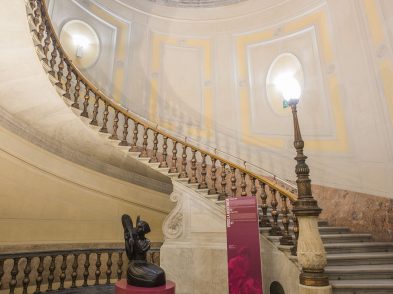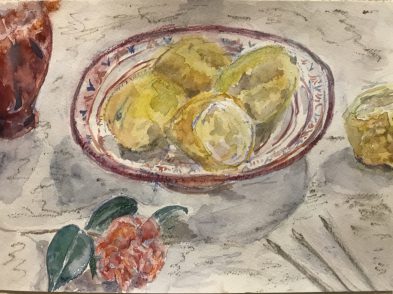Florence is a city that guards its secrets well. Among these are the many gardens hidden behind impenetrable doors and iron gates. The visitor walking through the city’s stone streets may catch a glimpse of a flower-filled courtyard through a slit in a heavy Renaissance door or hear the trickle of a fountain and imagine the green oasis just outside his reach.
However, two gardens open to the public offer us the chance to spend a few hours in Eden.
Boboli Gardens, in the heart of the crowded city, is not just a grand outdoor museum with statues and impressive vistas, but also a vital resource for Florentines. It is a place for children to play and where, along its winding paths, one can find secret spaces enclosed by high hedges offering seclusion and the chance to be absorbed by what Andrew Marvell described as ‘a green thought in a green shade’.
The cultural importance of gardens since before recorded history can be traced in a fascinating exhibition currently to be seen in the Limonaia at Boboli: Il Giardino Antico da Babilonia a Roma (Gardens of Antiquity from Babylon to Rome). On display are frescoes from Pompeii, illustrating the importance of green spaces in civilised life through detailed paintings of the plants and flowers that were grown in Roman gardens: oleander, centifolia rose, iris, lily, periwinkle. There are statues and fountains from Rome and Pompeii, along with reconstructions through texts, artefacts and videos. The images of those magnificent gardens created over 2,000 years
ago reveal the origins of gardens such as Boboli.
The exhibition begins with the earliest descriptions of gardens on ancient Egyptian tombs in the second millennium before Christ. In the hot, arid areas of the Middle and Near East, gardens were havens, fundamental to the lives of those who lived there. Tiny carvings from Egypt and Assyria show people watering and tending plants. A model of the Hanging Gardens of Babylon, set, like the original, on different levels and equipped with a sophisticated hydraulic system, is based on records and other findings from that period.
In Ancient Greece, gardens were a precious commodity, handed from one generation to the other. They were also associated with divinity: gods were worshipped in sacred groves and plants were essential to these rituals. Vases showing the nature cult of Adonis, Aphrodite in the garden and Hercules in pursuit of the fabled golden apples reveal the importance of the cycle of nature, with its symbolism of death and rebirth, in the art of the Greeks and Romans. On the outskirts of Athens, Plato and Aristotle had their philosophers’ gardens, where they strolled, pondered, and debated what constitutes a good and worthy life, so laying the foundations of western thought.
A walk through Boboli’s neighbour, Giardino Bardini, triggers the idea that perhaps we ought to revive the practise of the philosophers’ gardens. On a terraced hillside facing the city, we find flowers for every season: Judas trees with their magenta blossom, and fields of bluebells and daffodils in early spring; creamy banksia roses that give way to sweet-scented old roses; a wisteria-covered pergola, camellias; azaleas, irises and hydrangeas. As you sit on a stone bench enjoying the spectacle, the city’s rooftops are so close that you feel you could touch them. I made a recent visit, not for the flowers however, but to see a site-specific installation by Italian artist Michele Dantini: a brave or foolhardy attempt to do something different in a city so much associated with the past. Looking towards the gardens before crossing the river, I could see pastel-coloured banners waving in the wind, reminiscent of Uccello’s Battle of San Romano in the Uffizi. But Dantini’s banners are not related to military triumph: they proclaim the names of roses, many of them planted in the surrounding gardens, and reflect contemporary concerns in their play with language, meaning and our relationship with nature. What better place to debate the problems of our fragile earth than in these gardens above the city that rediscovered the spirit of Ancient Greece?
Il giardino antico da Babilonia a Roma
Until 28 October 2007
Limonaia del Giardino di Boboli, Boboli Gardens
Hours: 8.15 – 18.30
Tel. 055/2654321
Bardini Boboli Project
Until 7 October 2007
Giardino Bardini, via dei Bardi 1/r
Hours: 8.15 – 18.30
Tel. 055/2269570
A single ticket allows entrance to both gardens.
For information on initiatives in support of Boboli Gardens www.associazioneperboboli.it








